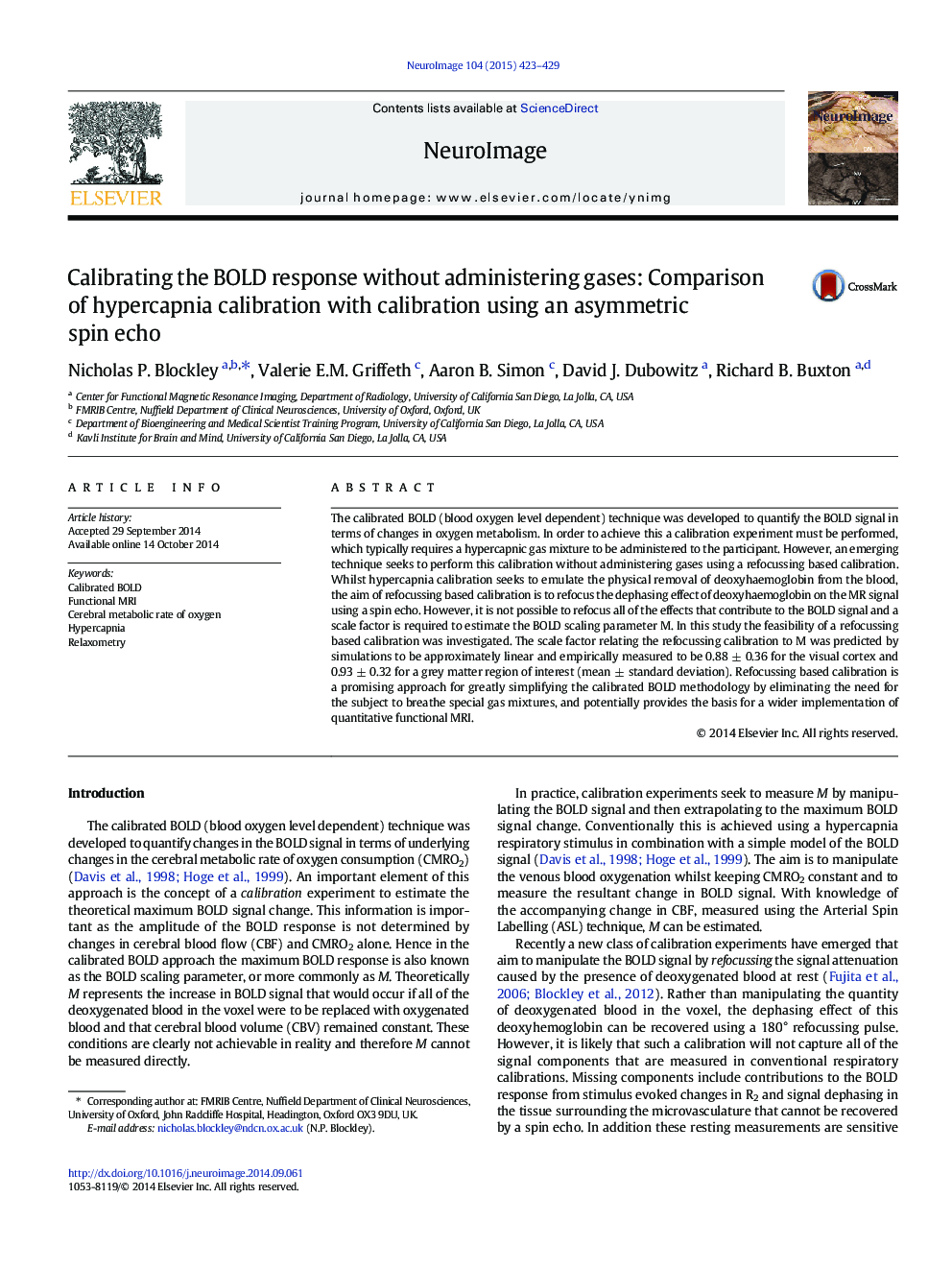| Article ID | Journal | Published Year | Pages | File Type |
|---|---|---|---|---|
| 6026516 | NeuroImage | 2015 | 7 Pages |
Abstract
The calibrated BOLD (blood oxygen level dependent) technique was developed to quantify the BOLD signal in terms of changes in oxygen metabolism. In order to achieve this a calibration experiment must be performed, which typically requires a hypercapnic gas mixture to be administered to the participant. However, an emerging technique seeks to perform this calibration without administering gases using a refocussing based calibration. Whilst hypercapnia calibration seeks to emulate the physical removal of deoxyhaemoglobin from the blood, the aim of refocussing based calibration is to refocus the dephasing effect of deoxyhaemoglobin on the MR signal using a spin echo. However, it is not possible to refocus all of the effects that contribute to the BOLD signal and a scale factor is required to estimate the BOLD scaling parameter M. In this study the feasibility of a refocussing based calibration was investigated. The scale factor relating the refocussing calibration to M was predicted by simulations to be approximately linear and empirically measured to be 0.88 ± 0.36 for the visual cortex and 0.93 ± 0.32 for a grey matter region of interest (mean ± standard deviation). Refocussing based calibration is a promising approach for greatly simplifying the calibrated BOLD methodology by eliminating the need for the subject to breathe special gas mixtures, and potentially provides the basis for a wider implementation of quantitative functional MRI.
Related Topics
Life Sciences
Neuroscience
Cognitive Neuroscience
Authors
Nicholas P. Blockley, Valerie E.M. Griffeth, Aaron B. Simon, David J. Dubowitz, Richard B. Buxton,
